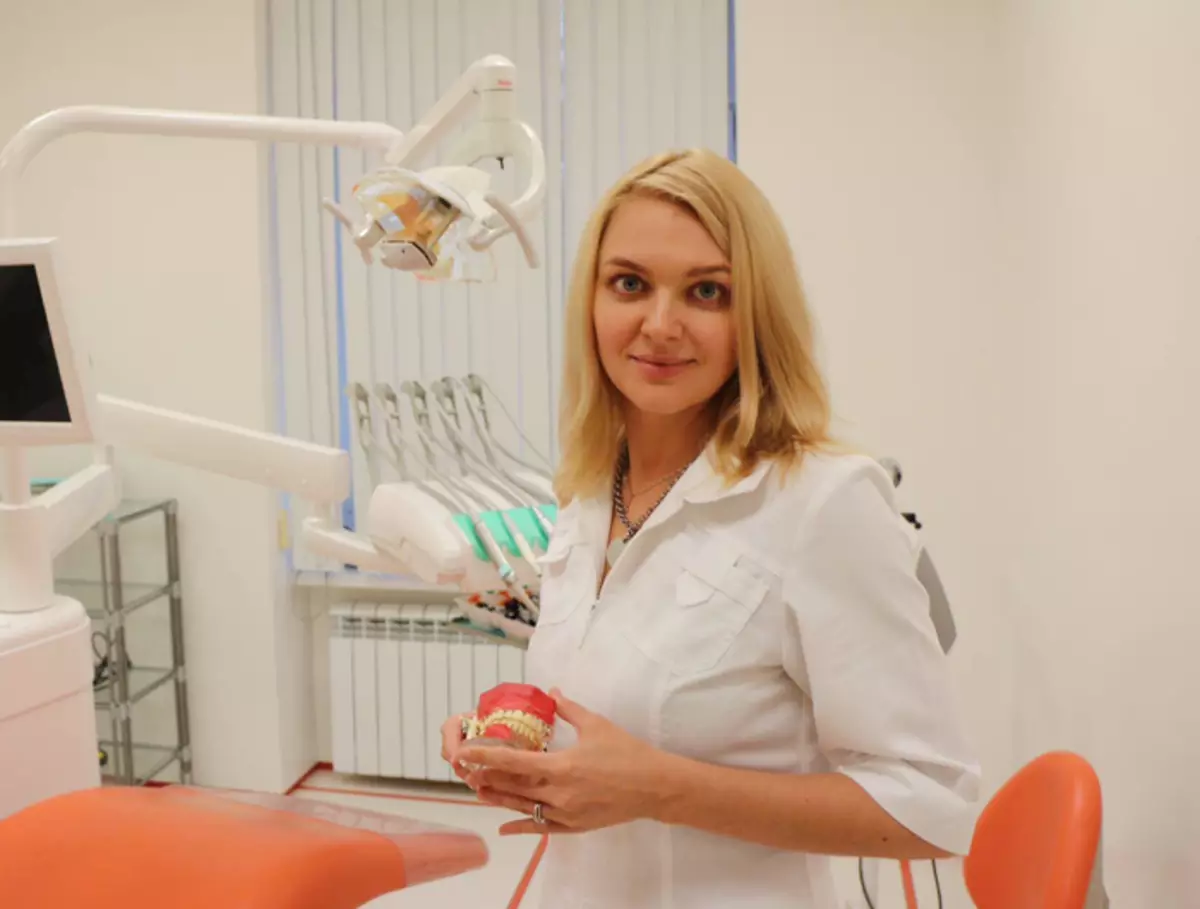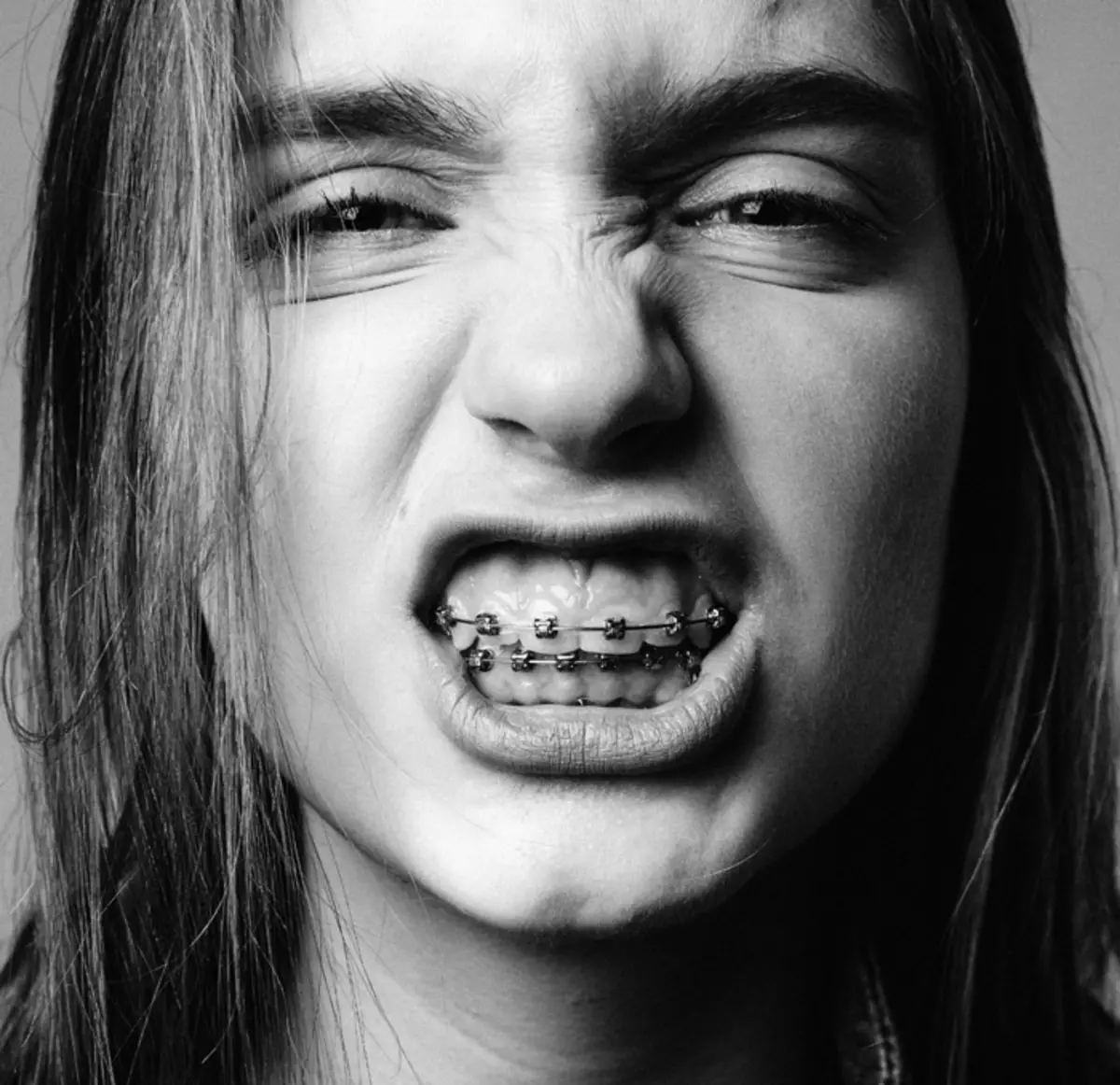one. Brequets - these are the so-called brackets that are fixed with one side of its base to the special orthodontic "glue" to the surfaces of the teeth, and on the other hand, there are two or four small protrusions - the wings, between which the groove is located - niche in which an arc connects the braces between by itself into the system. Without an arc - by themselves - braces will not work. It is the arc that pulls the teeth, clinging them for braces. Leave an arc in the grooves of brackets helps ligatures - elastic or metal elements that are installed on the wings of braces and tightly hold the arc in the system. So arranged ligature braces. There are also unlong-free braces, which have a lid between the wings over the groove, which holds the arc. In such a system of ligatures is not needed, and the doctor opens the caps over the groove and closes the special tool. Such a difference in the structure of braces does not alone braces better or worse than others - there are certain readings for the use of various systems and personal recommendations of the attending doctors.
2. Test Two versions of brackets treatment - Technique direct arc and loop (edzhuiz) technique. In the first case, braces are used with different characteristics of the groove for each group of teeth, that is, the bracket for the cutter will differ from the bracket for the fang, for example. With such a technique, a straight arc is used, which moves the teeth at the angles laid down in the grooves of braces. When using loop equipment, the individualization of the position of each tooth occurs not due to the characteristics of the grooves of braces, and due to the bends and loops deposited on the arc, while the braces for each tooth may be the same. Often orthodontists combine both techniques.

Elena Logatskaya
3. Breakers are made from Different materials - There are metallic, including from precious metals, plastic, sapphire, ceramic and combined braces. Basically, such a variety is dictated, on the one hand, the reduction of orthodontic treatment due to the lower cost of the metal bracket system, on the other hand, the possibility of minimizing the visibility of the treatment carried out when the aesthetic braces (transparent or white) is selected, but their cost will be higher. Also, the process of orthodontic treatment can be made bright in the literal sense of the word, choosing, for example, gold braces, and another bracket system can be decorated with multi-colored ligatures, which change on each planned reception - they will perform the necessary function and delight the diversity. Also, color ligatures, unlike transparent, are less prone to change its color caused by the use of food.
4. Breakers are External (vestibular) and internal (lingual) . External braces, even the most minor - sapphire or ceramic, - with a closer look around the surrounding will not remain secret. Lingual braces (internal) will be invisible to others, unless it is not to open a specially widespread mouth and not to declare them.
5. Alternative to treatment on brackets are invisible to others. transparent kapa, elineers or flexs, What, in essence, the same thing. Kapaps actually perform the role of an arc from the bracket system, and the role of brackets perform inconspicuous attacks - small tubercles from invisible orthodontic material, which are glued to some teeth and set the direction of their movement. To date, Kapa has become a very popular choice of patients, and in most cases they are very effective. Apply both in adult and in children's orthodontics.
6. Many patients are experiencing Do orthodontic structures affect their speech . The language is responsible for our speech, and if nothing bothers him, it does not change in any way. Thus, the external brackets can not affect the speech, but the linguals are for a while - yes. In exceptional cases, it may be influenced by changing the position of the language in the process of a significant change in bite, or, for example, the appearance of the gap between the teeth, which was not before. All this is temporary and completely eliminated when the bite and the position of the teeth is normal. Kapaps are not changed in most cases - the language is very quickly adapted to their presence in the mouth.
7. Braces systems Effective To correct the bite and position of the teeth, both in children and in adults. To begin the orthodontic treatment of children with the help of bracket systems, after a complete change of dairy teeth permanent. This is usually happening to 11-13 years. The braces do not put braces on the dairy teeth. Sometimes the orthodontic brackets are resorted to the dairy bite when it is necessary to change, for example, an extremely traumatic position of the anterior teeth in the child. But in these cases, braces are only put on constant teeth - usually on constant incisors of the upper jaw and the first permanent chewing teeth. Such correction takes place in a very short time (several months) and does not exclude the resumption of treatment after a complete change of teeth. Orthodontic treatment of adult patients is possible at any age in the presence of teeth and the absence of inflammatory processes in the oral cavity.

Bracket systems are different
Photo: unsplash.com.
8. Frequent experiences of patients planning orthodontic treatment are possible negative consequences for Enamel teeth . Orthodontic designs themselves, subject to the doctor of the protocol of their fixation and removal, enamel do not spoil. From the patient's part, the most important condition for preserving the enamel of their teeth is high-quality hygiene. It is very important when cleaning the teeth do not block the number of minutes that the toothbrush is in the mouth, and to check the mirror in the mirror - all the surface you have been cleaned. It is quite quite thorough hygiene in the morning and in the evening so that the enamel is preserved healthy and did not suffer in the process of carrying the bracket system, and after eating it will not be superfluous to rinse the mouth.
As for hygiene in the treatment on rails, it is important, in addition to standard hygienic procedures, remove the kapa at the time of food, as well as drinking sweet drinks. After eating and sweet drinks, you need to rinse your mouth and only then put on the kapa.
9. After the end of orthodontic treatment, in most cases you need to wear Retainers - Thin wires that are fixed from the inner surface of the teeth are invisible to others, and their main task is to maintain the result. The teeth are moving structures, as they have bonds that are attached to their holes in jaw bones. Any ligaments in the human body are able to stretch and tighten, causing a change in the position of the organ. The bone, too, despite its density, is a fairly plastic cloth, which, with constant power pressure, or, on the contrary, its absence changes its form and content. The process is unprecedented, but always present. Due to these effects, orthodontic treatment and becomes possible, but the same effects are able to make the result unstable. Retainers allow you to not worry for changing the position of the teeth, while the physiological mobility of the teeth required for their health is preserved. Retainers are recorded from the inner surface of the teeth of the upper and lower jaws from the fang to the fang. These are the most susceptible to the change of the prime of the teeth, as they are single-angry - it is easier for them to turn around than two- and three-arm chewing teeth, as well as to a lesser extent than chewing teeth are loaded with functional tasks. A modern person often avoids tough food, and even more so, her biting front teeth. In this connection, this smile zone interests us more in aesthetic plan, and functionally weakens and becomes more vulnerable and less stable. Retainers must be periodically changed, as they wear out over time.
10. An excellent bonus after carrying an external bracket system is a beautiful smile line due to training of a circular muscle of the mouth, which involuntarily occurs due to an increase in the amplitude of the articulation caused by the presence of braces. Braces are removed, and the habit of widely articulate remains, as it is enough to form a resistant habit of a habit of 40 days, and orthodontic treatment on average lasts 1.5 years.
